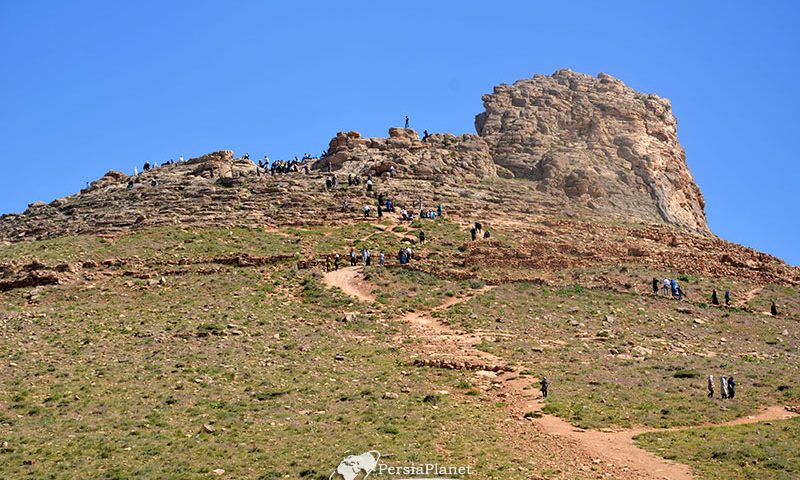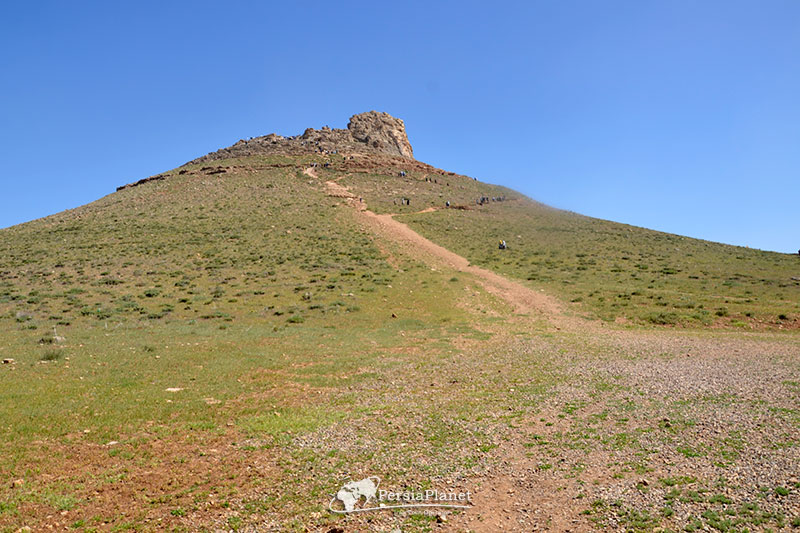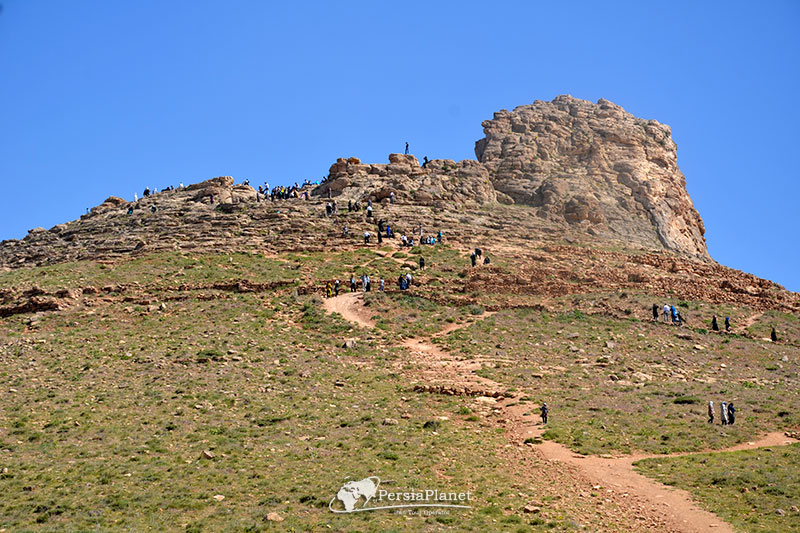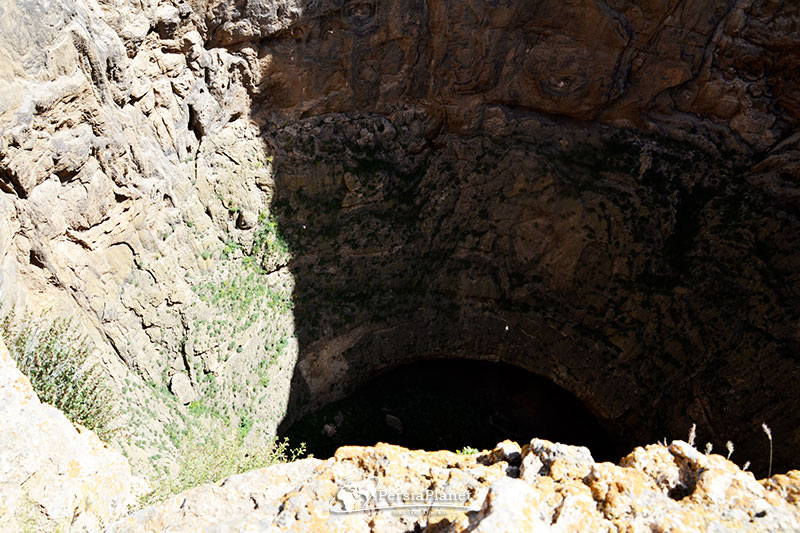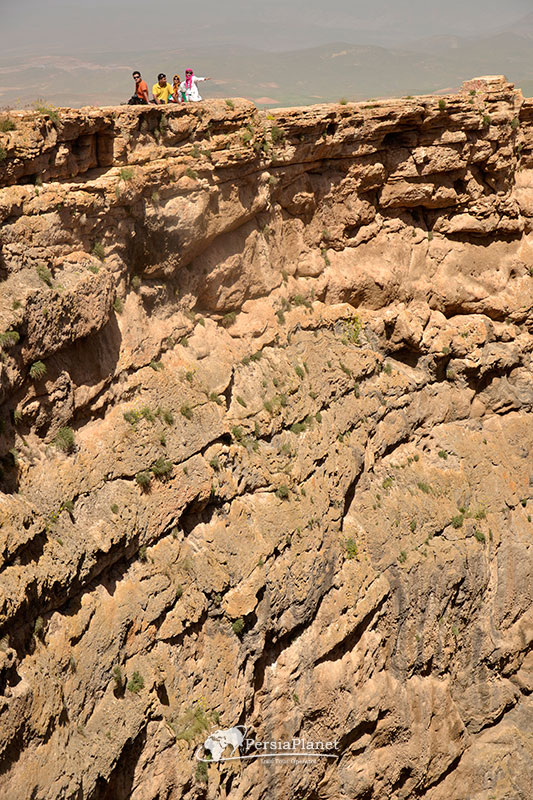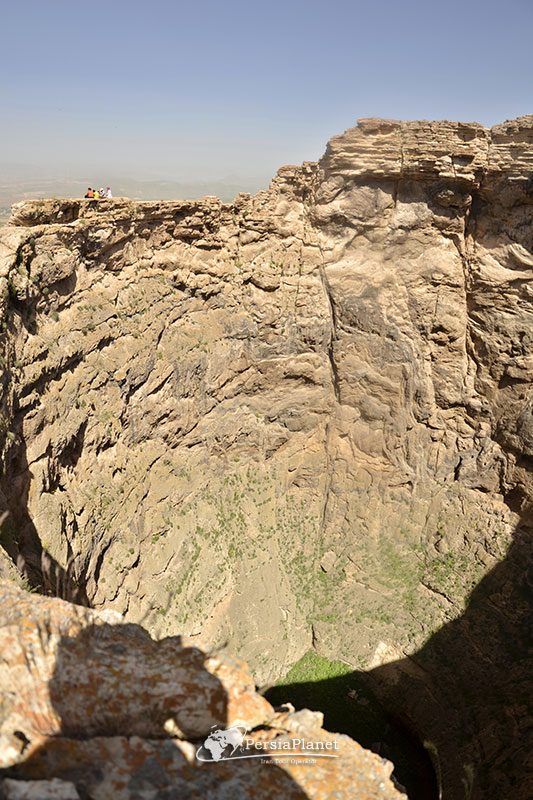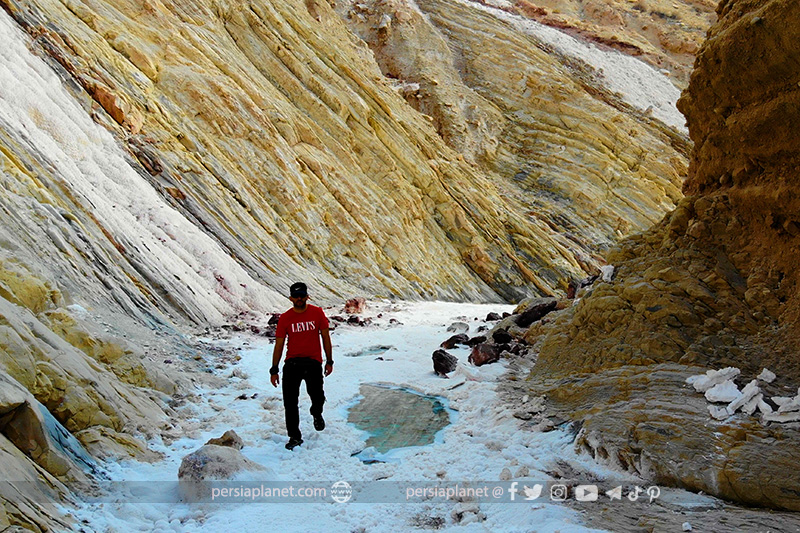Soleiman Prison Mountain

Takht-e Soleiman archeological complex, Soleyman
November 7, 2020
Saholan Cave
November 8, 2020Soleiman Prison (Zendan-e Soleiman) Mountain is located about 40 km northeast of Takab and less than 5 km south of Takht-e Soleiman. This low conical and interesting mountain looks very beautiful despite the lush gardens next to it. This mountain, with an approximate height of 100 meters, was once a place of worship for Zoroastrian priests. The remains of the buildings around the cone of Soleiman Prison show the importance of this holy place.
Probably two thousand years ago a cone that is empty today and is located at the mouth of the hill was full of water. Residues from reservoirs around the cone indicate that the water of this estuary and the lake inside it are unusable. Over time, due to the volume of sediments with the collapse of the crater, the springs of this lake, which were located at a depth of 100 meters, were closed and the cone gradually dried up.
Around the conical mouth of the prison mountain, the location of the holy temple related to the first millennium BC. Remains of architectural works around the prison entrance, according to the historical objects obtained, belong to the territory of the Manichaean government, which ruled from 830 to 660 BC in this region of Iran. It seems that the holy site flourished only as long as the mountain lake of the prison had water, and after the water dried up, this site was abandoned as a temple, and until some time after this incident, some of its architectural units were used as fortified castles. it is possible. The drying of the pit water was not sudden, but the water level decreased slowly over a long period of time, and this was probably due to the shrinking of the outlet of the boiling spring due to the accumulation of sediments.
Mehdi Gholami.

